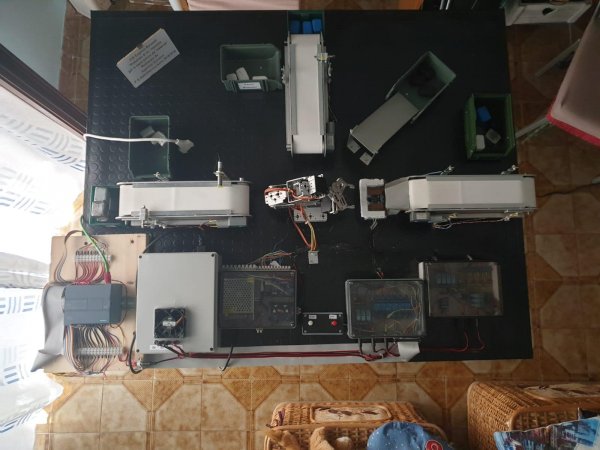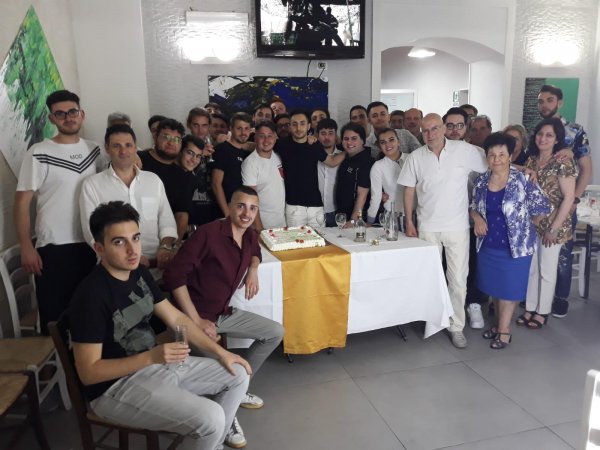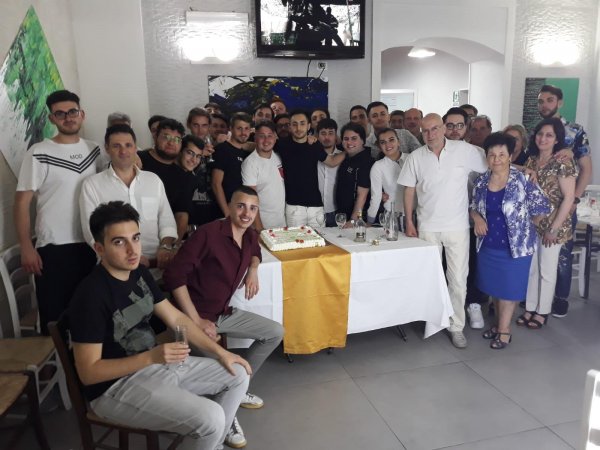Exhibitors 2019
- 3D PRINTING
- ART
- EDUCATION
- HOME AUTOMATION
- INTERNET OF THINGS
- KIDS & EDUCATION
- RECYCLING & UPCYCLING
- ROBOTICS
- SCIENCE
- YOUNG MAKERS (< 18)
- BIOLOGY
- GAMES
- ARTIFICIAL INTELLIGENCE
- OPEN SOURCE
- NEW MANUFACTURING
- FABRICATION
- WELLNESS & HEALTHCARE
- ENERGY & SUSTAINABILITY
- FOOD & AGRICULTURE
- 3D SCANNING
- CULTURAL HERITAGE
- AEROSPACE
- HACKS
- MUSIC & SOUND
- ARTISANS & NEW CRAFT
- FASHION & WEARABLES
- DRONES
- STEAM PUNK
- ARDUINO
- CROWDFUNDING
SEPARA E RICICLA
The automation starts with the presence of the piece on the first tape that is detected by an infrared photoelectric barrier. Once started the piece is counted when it passes through the second barrier and arrives at the base where two checks are made if it is a metallic material or not and the color of the pieces. Once the identity of the piece has been established, the PLC communicates to Arduino where it must carry the piece which activates the arm by executing the instructions previously loaded. If the piece is black this is carried on the chute; if the piece is white it is carried on the second belt where it is ejected from the belt by an electric piston; if the piece is colored it is always carried on the second belt but is not expelled by the piston arriving in the container placed at the end of the belt; if the piece is made of aluminum, the piece is taken to the third belt where it is ejected by an electric piston, finally if the piece is made of iron it is always carried on the third belt but is not ejected from the piston reaching the container placed at the end of the belt. A stop button was also provided to stop the process and return the arm to its initial position. The sensor that detects the color is the TCS230. It is composed of an 8 × 8 matrix of photodiodes. These 64 photodiodes are divided into 4 groups. 16 photodiodes have a red filter, 16 photodiodes have a green filter, 16 photodiodes have a blue filter and the remaining 16 photodiodes have no filter. The 16 photodiodes of the same filter are connected in parallel and produce a current proportional to the intensity of the light of the color they must detect. Via pins S2 and S3 of the TCS230 it is possible to select one group of photodiodes at a time. The current produced by the photodiodes is sent to a current / frequency converter, and consequently, upon exiting the integrated circuit, we will have a square wave frequency directly proportional to the intensity of the color light. Through the pins S0 and S1 it is possible to decrease the output frequency from the integrated. The first detection if it is a metallic material is made on the basis of the arrival of the first conveyor belt by two copper sheets which, due to the properties of the metals to be good conductors of electricity, close the contact on the PLC communicating the information of being a metallic piece, arrived on the belt is placed near an inductive sensor that determines the presence of the piece. The arm is moved by servomotors. In robotics for drives, servomotors are widely used. Usually these appear as small containers of plastic material from which a pin emerges, able to rotate in an angle between 0 and 180 °, maintaining the position reached stably. To obtain the rotation of the pin a DC motor is used and a mechanism that allows to increase the torque during rotation. The motor is rotated by an internal control circuit which is able to detect the rotation angle reached by the pin through a resistive potentiometer and lock the motor to the desired point. The communication between Arduino and plc takes place via relays. The pieces are ejected from the belt by a solenoid.
Italy
Aspronio Giovanni
We are 5 boys of the class 5D electrotechnical specialization of the ITI "E.Barsanti" of Pomigliano d'Arco, we have faced together the whole scholastic course by participating in different courses and projects proposed by the school obtaining good results, working in groups we try to do together every single operation concerning the project but there was also the opportunity where we set ourselves tasks for each team member to complete the project in less time. Knowing how to work in a group is essential because it is possible to reduce the production times but above all you learn to communicate better with others and you can make a decision with more people who have the same goal.
D30 (pav. 5)





















































































